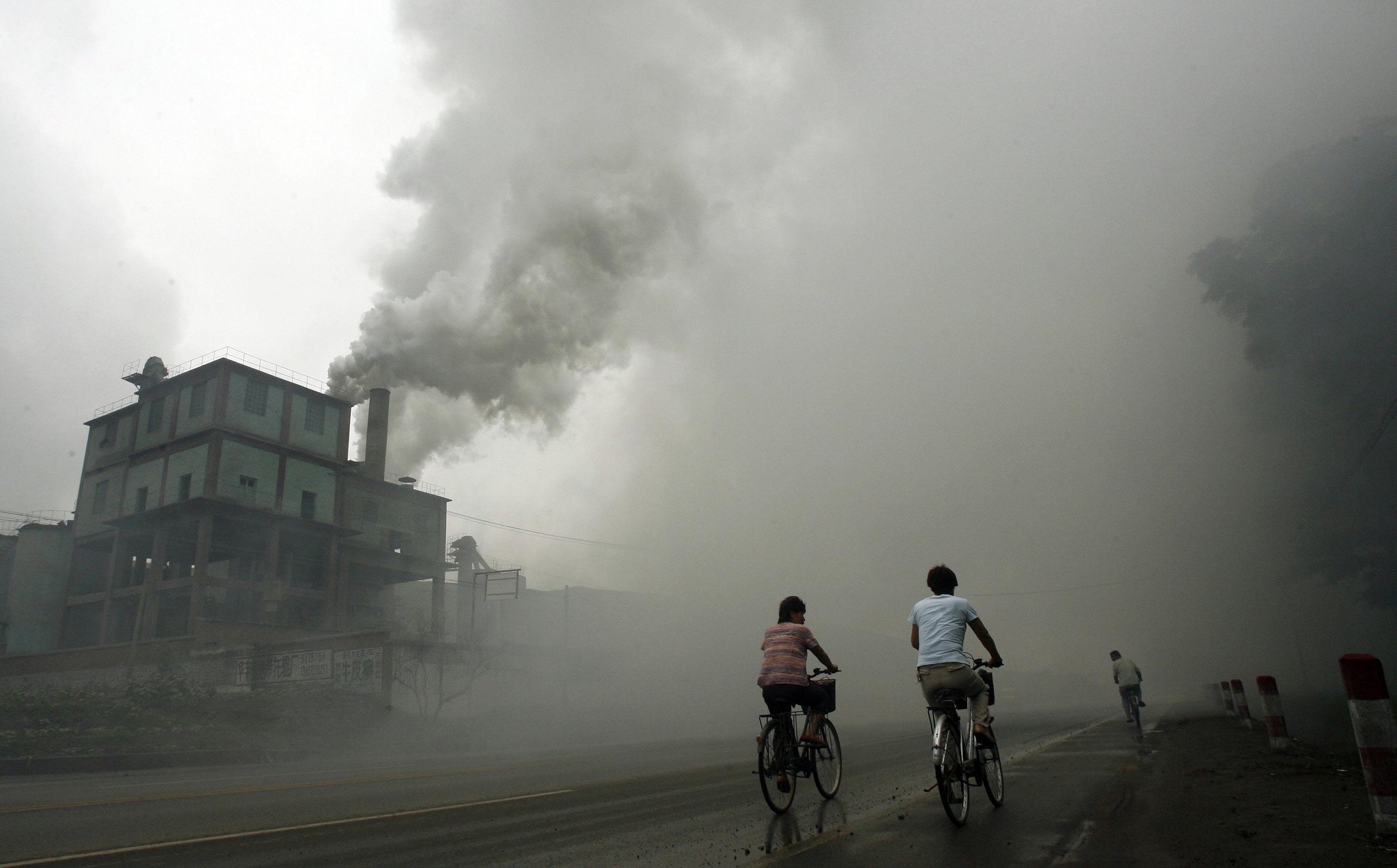WHO: 92% of the world's population breathes in air with elevated levels of pollutants.

The World Health Organization ( WHO ) has created an updated map of the pollution of the Earth’s atmosphere. According to this map, the overwhelming majority of people live in areas that exceed the norms of the level of air pollution. “The new WHO model makes it possible to see countries with dangerous sources of air pollution, and also provides an opportunity to assess the fight against these sources,” said Flavia Bustreo, Assistant Director-General of WHO.
The interactive map also shows the link between the level of air pollution and the health of people in different countries. A model was created based on data obtained by satellites and ground stations monitoring air quality. Such stations are located both within the boundaries of settlements and outside urban areas. When implementing the project, scientists used information obtained from approximately 3,000 such stations. The work was carried out jointly with the University of Bath, UK.
According to WHO representatives, about 3 million people a year die due to various diseases associated with air pollution. Constant exposure to a number of pollutants can be fatal to humans. In 2012, about 6.5 million people, according to experts, died due to air pollution (both the external atmosphere and indoor air). 6.5 million people are 11.6% of the global average number of deaths per year.
')
Approximately 90% of these deaths occur in low- and middle-income countries. Two thirds of deaths are in the Southeast and East Pacific regions. 94% of deaths are associated with non-communicable diseases such as cardiovascular diseases, lung cancer and others. Air pollution increases the incidence of non-fatal diseases in the population — for example, respiratory diseases.
“Atmospheric pollution is causing an increasing number of diseases for the most vulnerable categories of the population: women, children and the elderly,” says Dr. Bustreo. "To stay healthy, people must breathe clean air from the moment they are born."
The main sources of air pollution are motor vehicles and combustible minerals (thermal power plants and industrial enterprises that use them). The atmosphere can be polluted for natural reasons - but in this case we are talking about solid pollutants like the smallest particles of sand. This happens in regions close to sandy deserts. In other words, the sources of air pollution can be divided into:
1. Natural are natural pollutants of mineral, microbiological or vegetable origin. For example, volcanoes can saturate the atmosphere with chemical compounds.
2. Artificial, which are divided into several groups:
- Transport - all pollutants that enter the atmosphere as a result of the work of road, rail, air, sea and river transport;
- Production - these are pollutants, which are products of technological processes or heating emitted into the atmosphere. The burning of coal, the production of cement and the smelting of iron, for example, give a total dust emission to the atmosphere of 170 million tons per year .;
- Household - everything connected with the burning of fuel in homes and recycling of household waste.
Anthropogenic (artificial) sources of pollution are divided into several groups:
- Mechanical contaminants - various fractions of solid particles. Such particles are cement, ash particles, etc.
- Chemical pollutants - gaseous or dusty substances that can enter into chemical reactions;
- Radioactive contaminants.

In the WHO model, satellite and ground station data were used after careful analysis and adjustment. Map resolution - 10 * 10 kilometers. “This new model is a big step in assessing the causes of 6 million deaths - 1 out of 9 deaths on Earth,” says Maria Neira, Neira, Director of the WHO Department of Public Health and Environmental and Social Determinants of Health. “We are monitoring the air quality of more and more cities, satellite data are being updated, and we get an accurate picture of the pollution of the Earth’s atmosphere.”
A map built by WHO experts is interactive. It allows you to study the pollution of the atmosphere in different regions. Assess the level of air pollution can be in more than 3000 localities.
“It’s not possible to quickly solve the pollution problem,” says Neira. “The solution is in a sustainable and balanced system for the development of urban transport, a rational system of solid waste management, the use of alternative energy sources and a reduction in emissions from industrial enterprises.”
Recently it also became known that the concentration of carbon dioxide in the Earth’s atmosphere has increased to 400 parts per million. In just 200 years of industrial development, the concentration of carbon dioxide has risen from 280 to 400 parts per million. Scientists believe that the level of CO 2 in the air will not decline. It will only increase over time.
In addition to carbon dioxide, the main pollutants of the atmosphere are carbon monoxide, sulfur dioxide, nitrogen oxides, hydrocarbons and other chemical compounds.
Source: https://habr.com/ru/post/397889/
All Articles